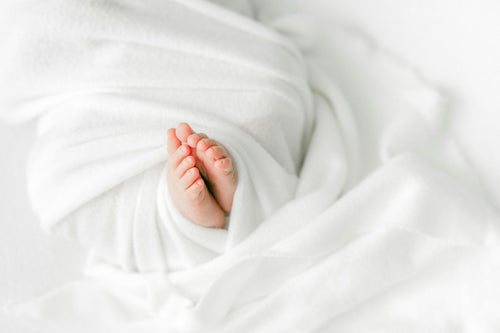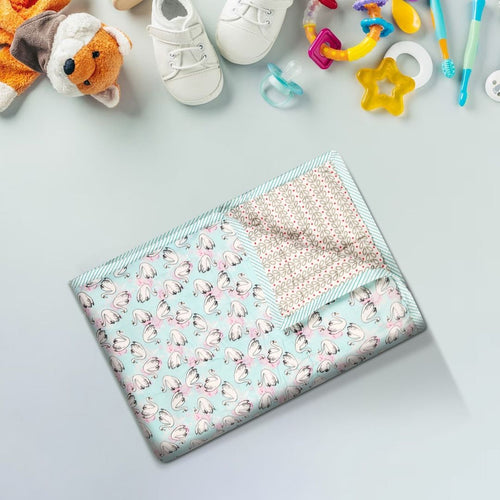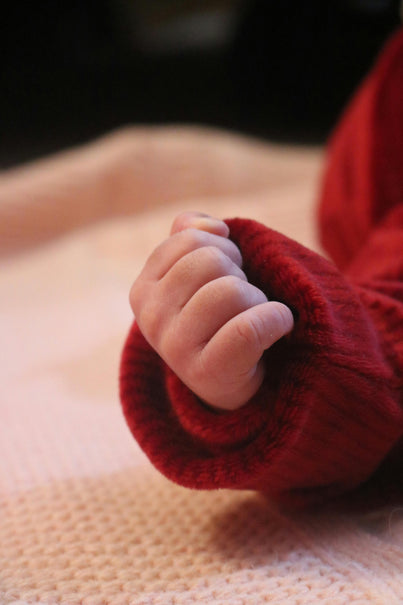Choose the Perfect Baby Blanket Size Chart and Dimensions
As a new parent, one of the most important items on your shopping list is a baby blanket. However, with so many different sizes available, it can be overwhelming to choose the right one for your little one. So in this article singhvis provide you a comprehensive guide to understand the different baby blanket sizes and which one is right for your baby.
Table of Content
- Common Baby Blanket Sizes
- Importance of Proper Sizing for Baby Blankets
- Factors to Consider When Choosing a Baby Blanket Size
- Material Matters
- How to Choose Baby Blankets Material?
- Conclusion
- FAQ
Common Baby Blanket Sizes
The standard baby blanket sizes are as follows:
1. Receiving Blanket: 30x30 inches
Receiving blankets are the smallest and are typically used for swaddling newborns.
2. Swaddling Blanket: 40x40 inches
Swaddling blankets are slightly larger and are used for wrapping up babies to help them feel secure and comfortable.
3. Crib Blanket: 45x60 inches
Crib blankets are the size of a standard crib mattress and are used for keeping babies warm and cozy while they sleep.
4. Toddler Blanket: 60x45 inches
Toddler blankets are larger and are used for toddlers who have outgrown their crib.

Importance of proper sizing for baby blankets
Proper sizing for baby blankets is crucial for several reasons. Firstly, a well-fitted blanket ensures that the baby is comfortable and safe. An oversized blanket can easily get tangled around the baby's limbs and face, increasing the risk of suffocation or Sudden Infant Death Syndrome (SIDS).
Secondly, a well-sized blanket also helps regulate the baby's body temperature. Newborns have a hard time regulating their body temperature, so a blanket that is too small may leave them feeling cold, while a blanket that is too big may cause overheating, which is also a risk factor for SIDS.
Additionally, proper sizing ensures that the blanket is easy to use and carry around. A blanket that is too large may be cumbersome to fold and carry around, while one that is too small may not provide adequate coverage for the baby.
Therefore, it is essential to choose the right size for your baby's blanket to ensure their safety, comfort, and overall well-being.
Factors to Consider When Choosing a Baby Blanket Size
Choosing the right size of blanket is essential for a comfortable and cozy experience.
Bed Size: The size of your bed is the most crucial factor to consider when choosing a blanket. The blanket should at least be wide enough to cover the entire mattress and hang over the edges.
The purpose of the blanket: Consider what you'll be using the blanket for. If you want a blanket to snuggle with on the sofa, a smaller size will be more comfortable. If you need a blanket for your bed, a larger size will be more appropriate.
Personal Preference: Everyone has their own preference for the amount of coverage they want when using a blanket. Some people prefer a smaller blanket that they can wrap themselves in, while others prefer a larger blanket that covers them completely.
Climate: The climate in your area will also determine the size of the blanket you choose. If you live in a colder climate, you may want a larger blanket that provides more warmth and coverage.
Room Size: If you have a smaller room, a larger blanket may overwhelm the space. It's essential to consider the proportions of the room when selecting the perfect blanket size.

Material Matters
When choosing a baby blanket, the material is just as important as the size. You want to choose a soft and breathable material that won't irritate your baby's skin. Some popular materials for baby blankets include cotton, muslin, and fleece. It's also important to choose a material that is easy to clean and maintain.
How to choose baby blankets material?
When it comes to cotton, it's a popular option because it's soft, breathable, and easy to wash. Muslin is also a great choice because it's lightweight and breathable, making it perfect for warmer climates. Fleece, on the other hand, is a cozy and warm option that's perfect for colder weather.
It's important to note that some materials may cause allergic reactions in some babies. If your baby has sensitive skin or eczema, it's best to avoid blankets made from wool or synthetic fabrics. Instead, opt for organic cotton or bamboo, which are hypoallergenic and gentle on the skin.
When selecting a material, it's also important to consider the durability and longevity of the blanket. A well-made blanket will last longer and provide more value for your money.


Conclusion
Selecting the ideal baby blanket involves considering both size and material. From the smallest receiving blanket to the larger toddler blanket, each size serves a specific purpose in ensuring comfort and safety for your baby.
Proper sizing is crucial to prevent entanglement risks and regulate body temperature. Factors like bed size, intended use, and climate guide your choice.
Material matters too – choose soft, breathable options like cotton, muslin, or fleece, considering your baby's skin sensitivity.The perfect blanket, tailored to size and material, provides the ultimate cocoon of comfort and security for your little one.
Frequently Asked Questions (FAQs)
Q1: Can I use a crib blanket for swaddling?
While crib blankets are perfect for bedtime, swaddle blankets are designed for the snug wrapping babies love. Opt for the right tool for the job!
Q2: How often should I wash my baby's blankets?
Aim for a wash every 1-2 weeks, but if superhero messes happen, don't hesitate to give them a little extra love.
Q3: Can I use DIY blankets for everyday use?
Absolutely! DIY blankets add a personal touch to everyday adventures, making them extra special.
Q4: Are online platforms reliable for baby blanket shopping?
Yes, many online platforms offer a wide selection, reviews, and convenient shopping. Just ensure they meet your safety criteria.
Q5: What's the best way to store baby blankets when not in use?
Keep them in a cool, dry place. Folding neatly or rolling prevents wrinkles, ensuring they're ready for action whenever needed.

